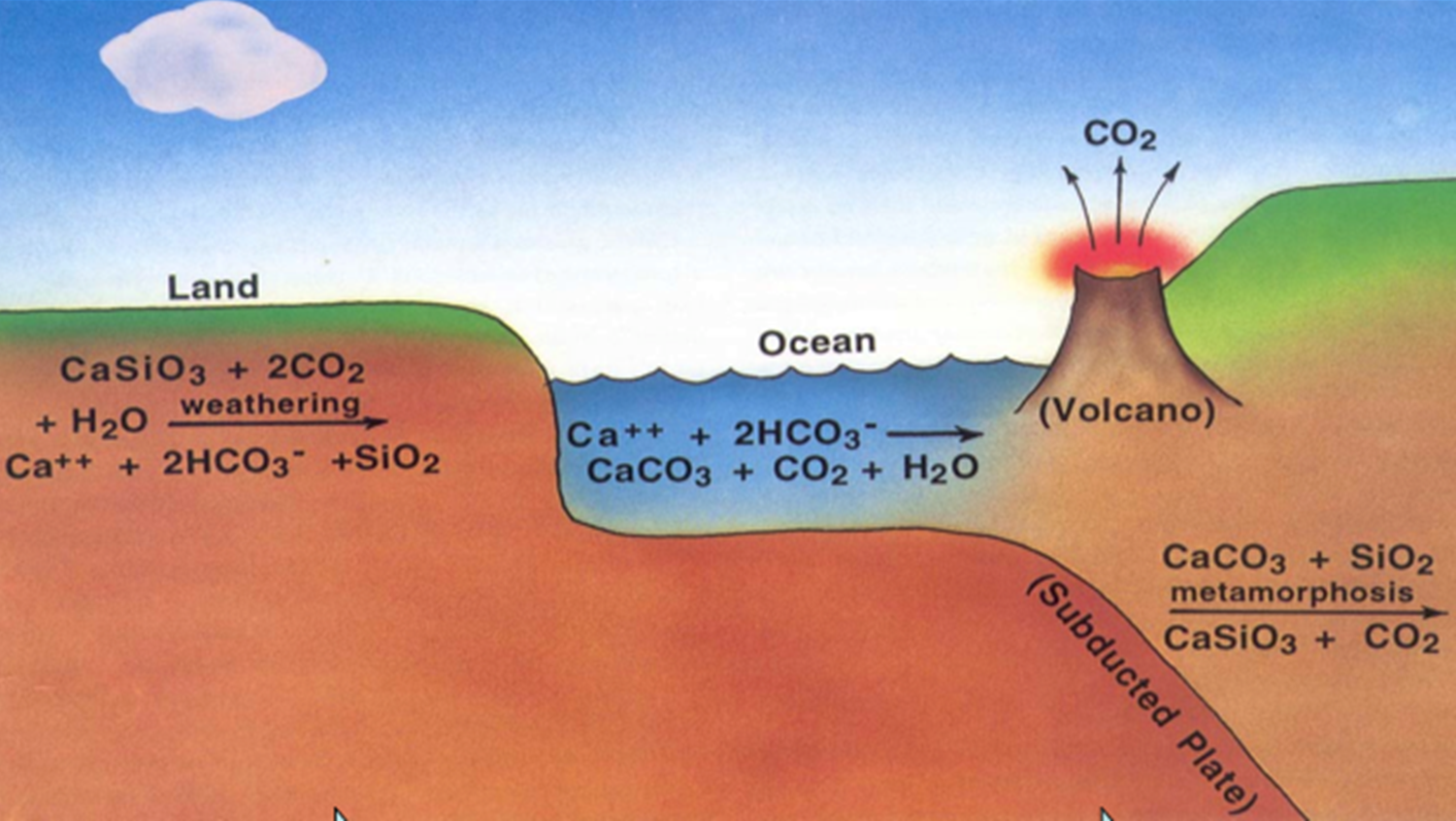PX282 - J7c - earth and venus
- CO
dissolves in water, forming carbonic acid - this causes acid rain, which erodes silicate rocks
- the calcium carbonate is deposited as ocean sediments (limestones), which comprises of
of earth's carbon - this negative feedback in carbon-silicate cycle stabilizes the climate

-
increase in CO
increase in the surface temperature increase in ocean evaporation erosion deposition of calcium carbonate decrease in CO -
CO
is also returned to the atmosphere by volcanoes when ocean plates are subducted -
on venus, there is a competing positive feedback loop, which leads to runaway greenhouse
-
increase in CO
increase in the surface temperature increase in ocean evaporation increase in water vapour increase in surface temperature -
this happens until all the water is evaporated into the atmosphere:
's K -
this forms magma ocean, and the carbon-silicate cycle shuts off
-
CO
from volcanoes accumulates in atmosphere -
earth is not heated enough for runaway greenhouse, even with 100 bar CO
, unlike venus -
early earth probably had a thicker CO
atmosphere, avoiding freezing when the sun was fainter -
this could be the answer to the faint-young sun paradox
-
the total quantity of CO
and N is actually very similar for earth and venus, with CO as ocean sediments on earth -
the water on venus is believed to be split by UV photosynthesis into H and O
-
H evaporated into space
-
supported by the large excess of deuterium on venus, which is less vulnerable to evaporate than H